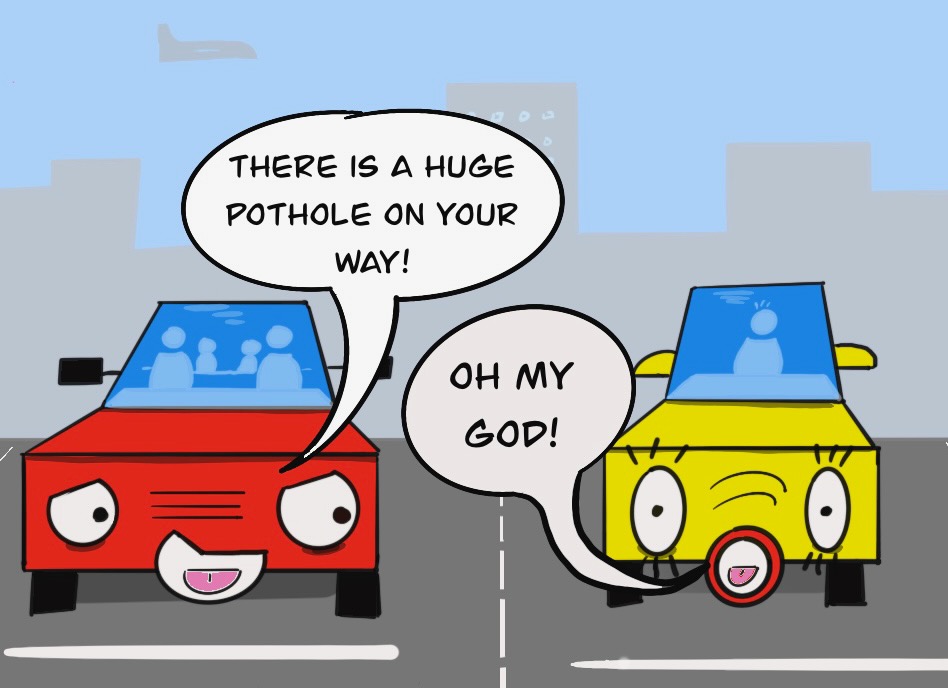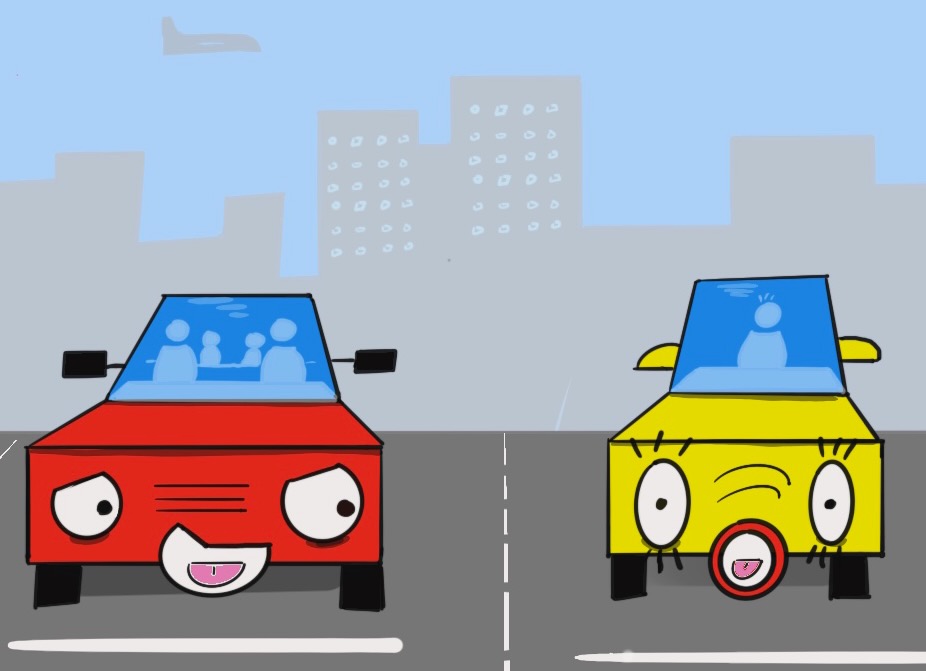Two of the automotive buzzwords of recent years have been vehicle-to-vehicle and vehicle-to-infrastructure communications. They promise greater safety for drivers. They also promise greater convenience and better traffic flow. But this technology has been a long time in the making. Where do we stand with these promises, and will they become reality any time soon?
Cars Talking to Each Other
The idea behind vehicle-to-vehicle (or V2V) is that cars on the road will communicate with each other via radio. This will enable completely new applications. For example, a car drives over an icy patch on the road. It detects this situation and then relays this message to the cars behind it on the road. These cars can then display a warning to their drivers, and they can stop in time instead of driving over the icy patch at full speed. A similar situation would be if a car breaks down right after a sharp turn. This would pose a high risk to other drivers who are not expecting a car around the bend and then cause a crash. V2V technology could prevent this accident.
The idea is that many crashes could be prevented in this way.

Another way that communication could improve the lives of drivers is by allowing cars to talk to infrastructure, such as traffic lights, speed signs, or traffic control centers. This is called Vehicle-to-Infrastructure (or V2I).
Cars could automatically stop when the light turns yellow and reignite their engines when the light is about to turn green. The traffic control center could provide less congested routes or the availability of parking spaces.
And the final extension of this idea is that cars can also communicate with other road users, such as pedestrians or cyclists. For example, a car could detect when a pedestrian is crossing the street, perhaps in the wrong place, and then slow down to avoid a collision. This last step is appropriately called Vehicle-to-Everything (or V2X).
State of the Union
These promises sound great when you read them in a press release. But so far there does not seem to be a single use case where you can experience these solutions outside of the car manufacturer’s proving grounds. On the other hand, the first ideas were already developed in the 1970s (link). This made me wonder if this is a technology of the future or just another hype.
I investigated by looking at publications and press releases from the last few years. Interest in this technology seems to have peaked in the 2000s and 2010s. During the 2010s, several automakers had announced prototype installations. Many universities and research institutes displayed prototypes and competed for research grants.
However, there have been far fewer publications in recent years. The journal IEEE Spectrum lists the last relevant publication in 2020. No car manufacturer has made any announcements in recent years. And also the homepage of the interest group “Car2Car Communication Consortium” (link) shows the last news from October 2022, almost a year old.
It seems that the whole topic has lost a lot of traction. So much so that the auto industry is starting to lose government support. The FCC has removed half of the spectrum reserved for 802.11p communications because it was never used (link).
For all practical purposes, this technology seems to be dormant at best.
What Went Wrong
Why has this technology not taken off after all the interest and research by many people and organizations around the world?
One of the biggest challenges automakers face in adopting these technologies is interoperability. Cars need to use the same communication technology to talk to each other. Many different wireless technologies have been proposed over the years, including 802.11p, an extension of the Wi-Fi standard, and 5G cellular infrastructure.
However, the spectra used are not the same around the world (source), which means that car manufacturers would have to develop different technologies for different markets. This discourages manufacturers from investing in this technology.
The additional radio equipment also makes cars more expensive. Here we have a chicken-and-egg problem: As long as there are very few cars on the road equipped with V2V technology, the proposed use cases will not work. On the other hand, why should a customer pay more for a technology that does not yet benefit him or her? This is another important factor slowing down the adoption of this technology. So far, no country has made a push to subsidize the introduction of compatible vehicles or taken other measures to solve this problem.
Even if we had a standard and many cars were equipped with it, another problem would be to keep cars compatible over many decades. It would be very difficult to upgrade to a new standard because cars sold 20 or more years ago would still need to be supported. This is a problem that railroads are well aware of. They have standards that are well over a hundred years old (see my article on railway interfaces) and it is still almost impossible to change them. And in the railroad business, rolling stock is owned by only a few companies. Imagine how much more difficult it is to upgrade to a new technology when you have millions of individual car owners.
Relying on additional technology also brings additional problems. All radio communications can be jammed to the point of failure. It can be tampered with and hacked. Cars can be tracked and it is possible to find out who lives where and who drives expensive cars, as demonstrated by the University of Twente (link).
It is easier to stick to the interfaces that are simple and have worked since the beginning of time: Everything the driver can see: Brake lights of cars ahead, traffic lights, speed signals. This is an interface that always works and does not need any additional fancy technology.
In a sense, the use cases promised by Vehicle-to-Infrastructure have also been rendered obsolete by recent developments. We do not need additional infrastructure to show us where a traffic jam is: Google Maps already does that. The GPS system also knows where to expect road works. Car manufacturers use the data collected from their fleet to show you where you can find a free parking space (link). In a sense, V2I has become a reality, but not because of a buzzword and a lot of research and standardization. Instead, it was introduced by tinkering by private companies and feedback from drivers about what works and what doesn’t. Another proof of Nassim Taleb’s observation that important breakthroughs come from tinkering and not from committees.
Conclusion
The ideas of vehicle-to-vehicle, vehicle-to-infrastructure, and just about everything else sound nice in theory. However, it seems to me that the concepts that have been proposed over the past few years have reached a dead end. Government legislators have lost hope in the technology and are taking away available spectrum. Automakers seem to have found a new area of focus with electric vehicles and autonomous driving. There seems to be no bright future for V2V and the like.
On the other hand, the original visions are still worthwhile. However, large-scale standardization does not seem to be the way forward. Instead, companies are finding use cases that easily scale with existing technology, such as real-time traffic information based on fleet data. Future cars will be even more connected, and we can expect automakers and technology companies to come up with some surprising use cases that no standards committee can foresee.
